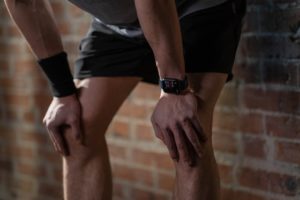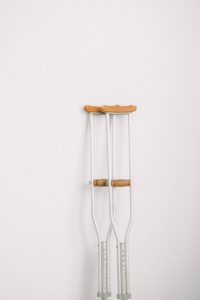 Orthopaedic surgeries are complex and utilise various healthcare resources, resulting in high healthcare costs. The cost of orthopaedic surgeries worldwide is second only to cardiac interventions; ranging from an average of USD 1800 for a trigger finger procedure to USD 30,000 for a hip replacement operation. The actual amount varies greatly from country to country due to differences in overhead costs.
Orthopaedic surgeries are complex and utilise various healthcare resources, resulting in high healthcare costs. The cost of orthopaedic surgeries worldwide is second only to cardiac interventions; ranging from an average of USD 1800 for a trigger finger procedure to USD 30,000 for a hip replacement operation. The actual amount varies greatly from country to country due to differences in overhead costs.
Overhead cost is defined as the operational expenses of a hospital that indirectly contributes to a patient’s management. It includes expenditures related to infrastructure and furnishing of outpatient services, upgrading of clinical and non-clinical equipment, staff salaries, utility costs, maintenance of hospital information technology services, research and development, and so on. The overhead costs in developing countries are significantly higher than their third world counterparts due to higher investment in infrastructure, personnel expertise, technological advancements and better healthcare facilities.
Orthopaedic surgeries are among the top five contributors of hospital resources. One of the most expensive orthopaedic procedures is knee arthroplasty, or knee replacement surgery. The surgery itself is estimated to cost USD 15,000 per patient, per knee. This excludes pre-procedure consultation and investigation charges. Overall, the incurred expenses range from USD 6000 in India to USD 35,000 in America. In Malaysia, the damage is approximately USD 7500 per patient. The main cost driver is operating theatre charges, followed by pharmacy and inpatient services. Globally, the projected total amount spent on knee replacement therapy is almost 1 trillion dollars every year.
 Knee arthroplasty is part of the management of advanced chronic knee osteoarthritis and mostly performed on older patients. It helps patients remain functionally independent and perform activities of daily living without being limited by pain, therefore improving quality of life.
Knee arthroplasty is part of the management of advanced chronic knee osteoarthritis and mostly performed on older patients. It helps patients remain functionally independent and perform activities of daily living without being limited by pain, therefore improving quality of life.
The increase in life expectancy worldwide has resulted in a steep rise in healthcare costs, especially in the management of chronic diseases like osteoarthritis. There is a massive demand for knee replacement therapy among elderly “baby boomers” with degenerative joint diseases. However, it is difficult to meet these demands due to scarce healthcare resources. It is predicted that the knee arthroplasty market will grow steadily at a compounded rate of 5% per annum through to 2024.
While there is an increasing burden of chronic knee osteoarthritis in the ageing population, data show an upward trend in prevalence among younger age groups. This shift in demographics is associated with the worrying rise in obesity worldwide, which causes an earlier onset of osteoarthritis. This co-existence of degenerative joint disease in both young and elderly populations has led to a substantial economic burden for the management of knee osteoarthritis in general and need for knee replacement therapy specifically.
The looming limits of curative procedures has forced the focus to shift to disease prevention. The two main approaches to minimise the burden of chronic osteoarthritis are weight management and injury prevention.
We must practice a holistic healthy lifestyle through effective physical activity, exercise and a balanced diet to maintain an optimal body weight. However, this approach requires good health literacy. Health promotion efforts should be done in tandem with providing supportive infrastructure for people to be physically active. A safe, conducive environment for sports activities and access to affordable, healthy food choices must be available to ensure sustainability of the weight management approach.
 Sports injuries, workplace accidents and other falls are risk factors to develop secondary osteoarthritis. A person with a history of trauma is more likely to develop osteoarthritis in the affected joint. Therefore, injury prevention measures such as protective gear are critical when performing any potentially dangerous activities. Stretching and strengthening exercises, including warm-up and cool-down, are core components for effective injury prevention.
Sports injuries, workplace accidents and other falls are risk factors to develop secondary osteoarthritis. A person with a history of trauma is more likely to develop osteoarthritis in the affected joint. Therefore, injury prevention measures such as protective gear are critical when performing any potentially dangerous activities. Stretching and strengthening exercises, including warm-up and cool-down, are core components for effective injury prevention.
In conclusion, the economic burden for chronic knee osteoarthritis is huge and will continue to increase without timely intervention. Curative and preventative approaches must be assimilated to reduce the disease and financial strains of this condition.
Written by Dr Amirah Azzeri (MBBS), (MPH), PhD (Health Economics)
Edited by Dr Chua Li Shun
References
- Nguyen T V. Osteoarthritis in southeast Asia. Int J Clin Rheumtol. 2014;9(5):405–8.
- Salmon JH, Rat AC, Sellam J, Michel M, Eschard JP, Guillemin F, et al. Economic impact of lower-limb osteoarthritis worldwide: a systematic review of cost-of-illness studies. Osteoarthr Cartil. 2016;24(9):1500–8.
- Foo CN, Manohar A, Rampal L, Lye MS, Mohd-Sidik S, Osman ZJ. Knee pain and functional disability of knee osteoarthritis patients seen at Malaysian government hospitals. Malaysian J Med Heal Sci. 2017;13(2):7–15.
[This article belongs to The Malaysian Medical Gazette. Any republication (online or offline) without written permission from The Malaysian Medical Gazette is prohibited.]
